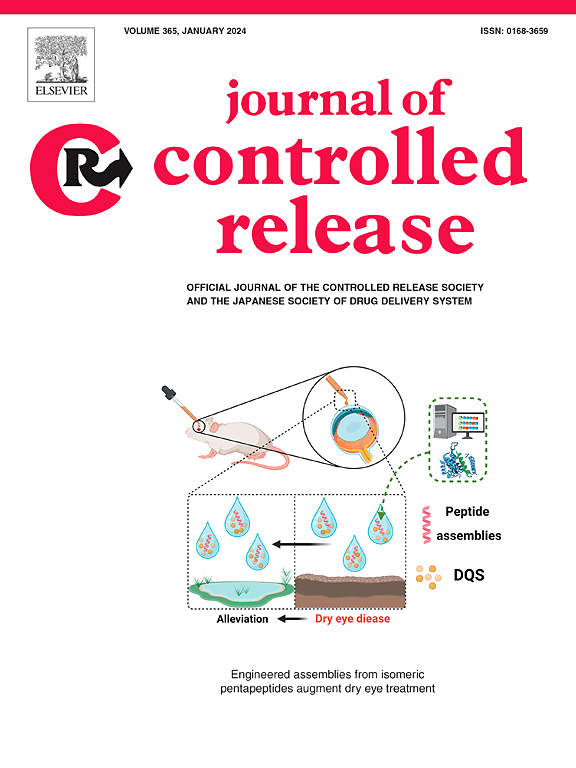Codelivery Ce6 and curcumin in antibacterial poly(β-amino ester) for anti-inflammatory and photodynamic antimicrobial combination therapy
IF 10.5
1区 医学
Q1 CHEMISTRY, MULTIDISCIPLINARY
引用次数: 0
Abstract
Developing antimicrobial therapies not rely on antibiotics is an expective way to resolve the threat of drug-resistant bacteria, such as photodynamic antimicrobial therapy (APDT). However, the main antibacterial species in APDT are reactive oxygen species (ROS), and the overproduction of ROS will cause serious inflammatory and delay wound healing. Therefore, it is necessary to solve this contradiction in order to realize anti-inflammatory in the process of APDT. Here, we selected Ce6 as a photosensitizer for APDT, phenylboronic acid (PBA) was introduced on Ce6 (as Ce6-D-P) to get bacterial targeting, and then covalently grafted curcumin (Cur) on Ce6-D-P (as Ce6-D-P-C) to obtain anti-inflammatory ability. Finally, antibacterial poly(β-amino ester)(PBAE) was used as carrier to load Ce6-D-P-C to form nanoparticles Ce6-D-P-C@PBAE. Under light irradiation, ROS can be produced for APDT, and also, boroester bond on Ce6-D-P-C will broke to release small Cur molecules, and then released from Ce6-D-P-C@PBAE to perform anti-inflammatory. As a result, after ROS treatment, anti-inflammatory was achieved, forming stepwise antibacterial and anti-inflammatory therapy. The study showed that Ce6-D-P-C@PBAE was biosafe with good cell activity and also no hemolysis. The drug loading content of Cur in Ce6-D-P-C@PBAE can reach 11.2 %. When Ce6-D-P-C@PBAE was stimulated by light, the responsive release of Cur will achieve. In vivo studies, Ce6-D-P-C@PBEA can collaboratively kill bacteria and regulate inflammatory responses, as well as inhibiting and eliminating local inflammation, thereby promoting the healing of infected wounds. As a result, the Ce6-D-P-C@PBAE nanoparticles had both antibacterial and anti-inflammatory therapy abilities, which was important for combating bacterial infections and promoting wound healing.


求助全文
约1分钟内获得全文
求助全文
来源期刊

Journal of Controlled Release
医学-化学综合
CiteScore
18.50
自引率
5.60%
发文量
700
审稿时长
39 days
期刊介绍:
The Journal of Controlled Release (JCR) proudly serves as the Official Journal of the Controlled Release Society and the Japan Society of Drug Delivery System.
Dedicated to the broad field of delivery science and technology, JCR publishes high-quality research articles covering drug delivery systems and all facets of formulations. This includes the physicochemical and biological properties of drugs, design and characterization of dosage forms, release mechanisms, in vivo testing, and formulation research and development across pharmaceutical, diagnostic, agricultural, environmental, cosmetic, and food industries.
Priority is given to manuscripts that contribute to the fundamental understanding of principles or demonstrate the advantages of novel technologies in terms of safety and efficacy over current clinical standards. JCR strives to be a leading platform for advancements in delivery science and technology.
 求助内容:
求助内容: 应助结果提醒方式:
应助结果提醒方式:


